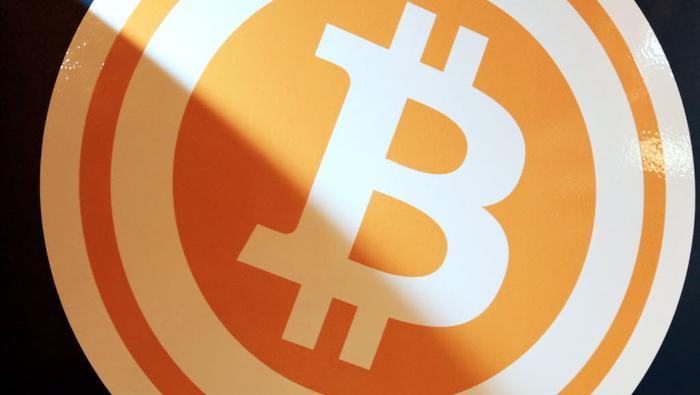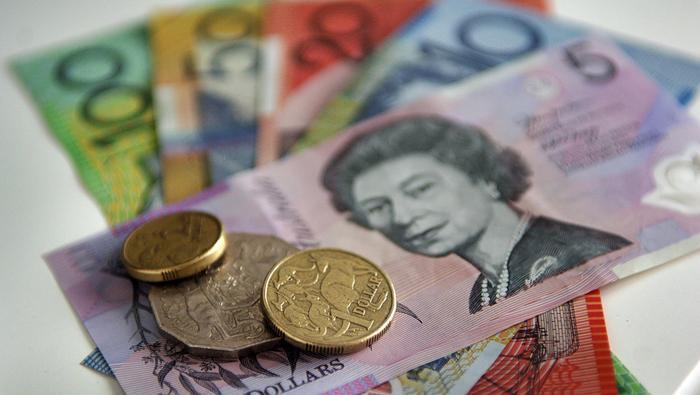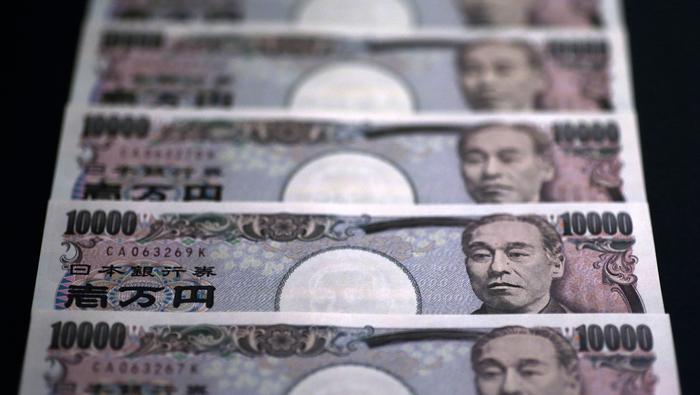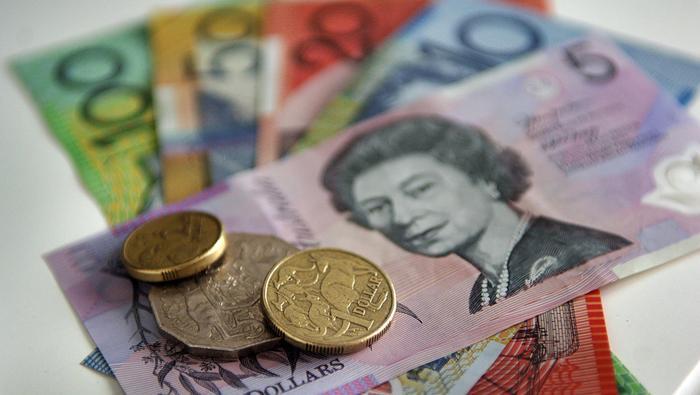2024-08-09 13:00
Bitcoin (BTC) Testing Technical Resistance, Gold (XAU) Nudging Higher Bitcoin rally hits moving average resistance. Gold within $60/oz. of posting a fresh all-time high. Bitcoin has recovered all this week’s losses and is back at levels seen just before last Friday’s NFP release sent risk markets tumbling on US recession fears. Over this week these worries have been dialed back and risk markets, including Bitcoin, have made a strong recovery. Printing a fresh lower low leaves the chart with a negative bias, while the 50- and 200-day simple moving averages are being tested but have held firm so far. These two moving averages must be broken convincingly before BTC can make the next move higher. If BTC/USD can break above$70k, a cluster of prior highs will prove difficult to overcome in the short term with $72k a notable double top. To the downside, $56.5k should hold if tested. Bitcoin Price Daily Chart Chart via TradingView The longer-term gold chart remains positive with a series of slightly higher lows and higher highs in place. The precious metal has been drifting sideways to marginally higher since early April with two breaks of resistance ($2,450/oz.) quickly reversed. Gold seems to be setting up for another attempt at this level and if successful the all-time high at $2,485/oz. will be quickly tested. Gold Price Daily Chart Chart via TradingView Retail trader data shows 53.72% of traders are net-long with the ratio of traders long to short at 1.16 to 1.The number of traders net-long is 12.76% lower than yesterday and 1.54% higher from last week, while the number of traders net-short is 19.83% higher than yesterday and 1.97% lower from last week. We typically take a contrarian view to crowd sentiment, and the fact traders are net-long suggests Gold prices may continue to fall. Positioning is less net-long than yesterday but more net-long from last week. The combination of current sentiment and recent changes gives us a further mixed Gold trading bias. What is your view on Gold and Bitcoin – bullish or bearish?? You can let us know via the form at the end of this piece or you can contact the author via Twitter @nickcawley1. https://www.dailyfx.com/news/bitcoin-btc-testing-technical-resistance-gold-xau-nudging-higher-20240809.html

2024-08-08 14:30
RBA, AUD/USD, GBP/AUD Analysis RBA Governor reiterates versatile approach amid two-sided risks AUD/USD fights back after RBA Governor Bullock highlights inflation worries GBP/AUD declines after massive spike higher – rate cut bets revised lower RBA Governor Reiterates Versatile Approach Amid Two-Sided Risks RBA Governor Michele Bullock attended a question and answers session in Armidale where she maintained the focus on inflation as the number one priority despite rising economic concerns, lifting the Aussie in the process. On Tuesday, the RBA released its updated quarterly forecasts where it lifted its GDP, unemployment, and core inflation outlooks. This is despite recent indications suggesting to the RBA that Q2 GDP is likely to be subdued. Elevated interest rates have had a negative impact on the Australian economy, contributing to a notable decline in quarter-on-quarter growth since the start of 2023. In Q1 2024, the economy narrowly avoided a negative print by posting growth of 0.1% compared to Q4 of 2023. Australian GDP Growth Rate (Quarter-on-Quarter) Source: Tradingeconomics, prepared by Richard Snow Bullock mentioned the RBA considered a rate hike on Tuesday, sending rate cut odds lower and strengthening the Aussie dollar. While the RBA assess the risks around inflation and the economy as ‘broadly balanced’, the overarching focus remains on getting inflation down to the 2%-3% target over the medium-term. According to RBA forecasts inflation (CPI) is expected to tag 3% in December before accelerating to 3.7% in December 2025. In the absence of consistently lower prices, the RBA is likely to continue discussing the potential for rate hikes despite the market still pricing in a 25-basis point (bps) cut before the end of the year. AUD/USD Correction Finds Resistance AUD/USD has recovered a great deal since Monday’s global bout of volatility with Bullocks rate hike admission helping the Aussie recover lost ground. The degree to which the pair can recover appears to be limited by the nearest level of resistance at 0.6580 which has repelled attempts to trade higher. An additional inhibitor appears via the 200-day simple moving average (SMA) which appears just above the 0.6580 level. The Aussie has the potential to consolidate from here with the next move likely dependent on whether US CPI can maintain a downward trajectory next week. Support appears at 0.6460. AUD/USD Daily Chart Source: TradingView, prepared by Richard Snow GBP/AUD declines after massive spike higher – rate cut bets revised lower GBP/AUD has posted a massive recovery since the Monday spike high. The massive bout of volatility sent the pair above 2.000 before retreating ahead of the daily close. Sterling appears vulnerable after a rate cut last month surprised corners of the market – resulting in a bearish repricing. The GBP/AUD decline currently tests the 1.9350 swing high seen in June this year with the 200 SMA suggesting the next level of support appears at the 1.9185 level. Resistance appears at 1.9570 – the March 2024 high. GBP/AUD Daily Chart Source: TradingView, prepared by Richard Snow An interesting observation between the RBA and the general market is that the RBA does not foresee any rate cuts this year while the bond market priced in as many as two rate cuts (50 bps) during Monday’s panic, which has since eased to 19 bps. Source: Refinitiv, prepared by Richard Snow Event risk peters out somewhat over the next few days and into next week. The one major market mover appears via the July US CPI data with the current trend suggesting a continuation of the disinflation process. https://www.dailyfx.com/news/rba-governor-stresses-optionality-amid-risks-to-inflation-and-growth-20240808.html

2024-08-08 08:41
Japanese Yen Latest – USD/JPY USD/JPY trading on either side of 146.00 Inflation has shown steady progress towards target. The ‘likelihood of achieving the inflation target has increased further’ and further upward pressure is expected, according to the latest Bank of Japan Summary of Opinions. ‘Assuming that the price stability target will be achieved in the second half of fiscal 2025, the Bank should raise the policy interest rate to the level of the neutral interest rate toward that time. As the level of the neutral rate seems to be at least around 1 percent, in order to avoid rapid hikes in the policy interest rate, the Bank needs to raise the policy interest rate in a timely and gradual manner, while paying attention to how the economy and prices respond.’ Bank of Japan Summary of Opinions USD/JPY continues to be buffeted by external factors, including the unwinding of the Japanese yen carry trade. While the Bank of Japan had taken a hawkish stance, signaling higher rates in the months ahead, the market has recently reined back its rate hike expectations over the last couple of days. Implied rates are now seen gradually moving higher, with the policy rate forecast to be around 50 basis points in one year's time. This shift in market expectations, away from more aggressive BoJ tightening, helped stabilize the USD/JPY pair after it had plummeted to touch 142 on Monday. However, on Tuesday, Bank of Japan Deputy Governor Shinichi Uchida walked back some of the more hawkish comments made by Governor Ueda, helping to stabilize the market. Dovish BoJ Comments Stabilise Markets for Now, USD/JPY Rises USD/JPY outlook remains uncertain, as the interplay between the Bank of Japan's policy path and growing expectations of a 50-basis point cut by the Federal Reserve continue to exert influence on the exchange rate. With little significant US or Japanese economic data expected this week, the USD/JPY pair may remain vulnerable to further official commentary and rhetoric from central bank policymakers. Statements from the BoJ and FOMC could drive further volatility in the pair as market participants try to gauge the future policy directions of both institutions. Retail trader data shows 48.62% of traders are net-long with the ratio of traders short to long at 1.06 to 1.The number of traders net-long is 6.90% higher than yesterday and 9.45% lower from last week, while the number of traders net-short is 6.20% higher than yesterday and 13.17% lower from last week. We typically take a contrarian view to crowd sentiment, and the fact traders are net-short suggests USD/JPY prices may continue to rise. Yet traders are less net-short than yesterday and compared with last week. Recent changes in sentiment warn that the current USD/JPY price trend may soon reverse lower despite the fact traders remain net-short. https://www.dailyfx.com/news/japanese-yen-latest-usd-jpy-stable-as-japanese-rate-hike-bets-pushed-back-20240808.html

2024-08-07 08:17
BoJ, USD/JPY Analysis BoJ Deputy Governor issues dovish reassurance to volatile markets USD/JPY rises after dovish comments, providing temporary relief BoJ minutes, Fed speakers and US CPI data on the horizon BoJ Deputy Governor Issues Dovish Reassurance to Volatile Markets Bank of Japan (BoJ) Deputy Governor issued comments that contrasted Governor Ueda’s rather hawkish tone, bringing momentary calm to the yen and Nikkei index. On Monday the Japanese index witnessed its worst day since 1987 as large hedge funds and other money managers sought to sell global assets in an attempt to unwind carry trades. Deputy Governor Shinichi Uchida outlined that recent market volatility could “obviously” have ramifications for the BoJ’s rate hike path if it impacts the central bank’s economic and inflation outlooks. The BoJ is focused on achieving its 2% price target in a sustainable manner – something that could come under pressure with a fast appreciating yen. A stronger yen makes imports cheaper and filters down into lower overall prices in the local economy. A stronger yen also makes Japanese exports less attractive to overseas buyers which could impede already modest economic growth and cause a slowdown in spending and consumption as revenues contract. Uchida went on to say, “As we're seeing sharp volatility in domestic and overseas financial markets, it's necessary to maintain current levels of monetary easing for the time being. Personally, I see more factors popping up that require us being cautious about raising interest rates". Uchida’s dovish comments balance Ueda’s rather hawkish rhetoric on the 31st of July when the BoJ hiked rates more than anticipated by the market. The Japanese Index below indicates a momentary halt to the yen’s recent advance. Japanese Index (Equal-weighting of USD/JPY, AUD/JPY, GBP/JPY and EUR/JPY) Source: TradingView, prepared by Richard Snow USD/JPY Rises after Dovish BoJ Comments, Providing Temporary Relief The unrelenting USD/JPY sell-off appears to have found temporary relief after Deputy Governor Uchida’s dovish comments. The pair has plummeted over 12.5% in just over a month, led by two suspected bouts of FX intervention which followed lower US inflation data. The BoJ hike added to the bearish USD/JPY momentum, seeing the pair crash through the 200-day simple moving average (SMA) with ease. The recent spike low (141.70) is the nearest level of support, followed by 140.25, the December 2023 swing low. Resistance appears all the way back at 152.00 which corresponds with the peak in USD/JPY back in 2022 moments before Japanese officials intervened to strengthen the yen. The RSI attempts to recover form massively oversold territory, providing an opportunity for a short-term correction. USD/JPY Daily Chart Source: TradingView, prepared by Richard Snow Japanese government bond yields have also been on the receiving end of a US-led downturn, sending the 10-year yield way below 1%. The BoJ now adopts a flexible yield curve approach where government borrowing costs are allowed to trade flexibly above 1%. Normally we see currencies depreciating when yields drop but in this case, global yields have dropped in unison, having taken their cue from the US. Japanese Government Bond Yields (10-year) Source: TradingView, prepared by Richard Snow The next bit of high impact data between the two countries appears via tomorrow’s BoJ summary of opinions but things really heat up next week when US CPI data for July is due alongside Japanese Q2 GDP growth. https://www.dailyfx.com/news/dovish-boj-comments-stabilise-markets-for-now-usd-jpy-rises-20240807.html

2024-08-06 13:13
FX Analysis: USD/JPY, AUD/JPY Markets show relief after yesterday’s global sell-off USD/JPY sell-off pauses, but threat of the carry trade unwind remains AUD/JPY embodies the risk off trade within the FX space Markets Show Relief after Yesterday’s Global Sell-off The effects of yesterday’s global sell-off appear to be easing on Tuesday. Risk gauges like the VIX, the yen and the Swiss franc have seen the selling hold up for the time being. The sharp global sell-off has been influenced by a number of factors but one stands at the heart of it, the carry trade unwind. With the Fed posturing up for a rate cut and the Bank of Japan normalizing its monetary policy through rate hikes, a drop in USD/JPY always seemed likely. However, the speed of its unravelling has shocked markets. For years investors took advantage of ultra-low interest rates in Japan to borrow yen and then invest that cheap money in higher yielding investments like stocks or even treasuries. Markets currently price in a 75% chance the Fed will kickstart the cutting cycle with 50 basis point (bps) reduction in September, instead of the usual 25 bps, after to the US unemployment rate rose to 4.3% in July. Such concern, sent the dollar lower and the BoJ surprise hike last month helped to strengthen the yen at the same time. Therefore, the interest rate differential between the two nations will be reduced form both sides, souring long-standing carry trade. Investors and hedge funds that borrowed in yen, were forced to liquidate other investments in a short space of time to finance the settlement of riskier yen denominated loans/debts. A fast-appreciating yen means it will require more units of foreign currency to purchase yen and settle those yen denominated loans. USD/JPY Sell-off Pauses, but the Threat of the Carry Trade Unwind Remains This week Fed members attempted to instill calmness to the market, accepting that the job market has eased but cautions against reading too much into one labour report. The Fed has admitted that the risks of maintaining restrictive monetary policy are more finely balanced. Holding rates at elevated levels hinders economic activity, hiring and employment and so at some stage the fight against inflation can jeopardise the Fed’s employment mandate. The Fed is expected to announce its first rate cut since the hiking cycle began in 2022 but the discussion now revolves around the number, 25 bps or 50 bps? Markets assign a 75% chance of a 50 bps cut which has amplified the downside move in USD/JPY. While the RSI remains well within oversold territory, this is a market that has the potential to drop for some time. The unravelling of carry trades is likely to continue as long as the Fed and BoJ remain on their respective policy paths. 140.25 is the next immediate level of support for USD/JPY but it wouldn’t be surprising to see a shorter-term correction given the extend of the multi-week sell-off. USD/JPY Daily Chart Source: TradingView, prepared by Richard Snow AUD/JPY Embodies the Risk off-Trade within the FX World AUD/JPY can be viewed as a gauge for risk sentiment. On the one hand, you have the Australian dollar which has exhibited a longer-term correlation with the S&P 500 – which itself, is known as a risk asset. Therefore the Aussie typically rises and falls with swings in positive and negative risk sentiment. On the other hand, the yen is a safe haven currency – benefitting from uncertainty and panic. The AUD/JPY pair has revealed a sharp decline since reaching its peak in July, coming crashing down at a rapid pace. Both the 50 and 20-day SMAs have been passed on the way down, offering little resistance. Yesterday’s intra-day spike lower and subsequent pullback suggests we may be in a period of short-term correction with the pair managing to rise at the time of writing. The AUD/JPY lift has been helped by the RBA Governor Michele Bullock stating that a rate cut is not on the agenda in the near term, helping the Aussie gain some traction. Her comments come after positive inflation data which has put prior talk of rate hikes on the backburner. 95.75 is the next level of resistance with support at yesterday’s spike low at 90.15. AUD/JPY Daily Chart Source: TradingView, prepared by Richard Snow https://www.dailyfx.com/news/global-sell-off-takes-a-breather-usd-jpy-and-adu-jpy-in-focus-20240806.html

2024-08-06 08:15
Gold and Silver - Technical and Sentiment Analysis Gold remains rangebound but sentiment is bearish Silver remains under pressure, support may be tested Gold prices are inching upward, recovering about half of Monday's losses, as tensions escalate over potential Iranian retaliation against Israel. Following the death of Hamas leader Ismail Haniyeh last week, Iran has openly vowed retribution, stoking concerns of an imminent attack. This development has intensified fears of a broader conflict in the Middle East, driving investors towards the safe-haven asset. Global conflicts and political instability often increase gold demand as governments and individuals seek to protect their wealth. Gold remains within a well-defined multi-month range with the precious metal testing, and briefly breaking, resistance before falling back. The short-term outlook remains mixed with the 50-day sma proving support while the 20-day sma acts as near-term resistance. The multi-month series of higher lows remains in place, while a break above $2,485/oz. is needed to keep a series of higher highs in place. Gold Price Daily Chart Chart via TradingView Retail trader data shows 57.69% of traders are net-long with the ratio of traders long to short at 1.36 to 1.The number of traders net-long is 7.05% higher than yesterday and 5.31% lower than last week, while the number of traders net-short is 9.89% lower than yesterday and 13.35% lower than last week. We typically take a contrarian view to crowd sentiment, and the fact traders are net-long suggests Gold prices may continue to fall. Traders are further net-long than yesterday and last week, and the combination of current sentiment and recent changes gives us a stronger Gold-bearish contrarian trading bias. Silver continues to underperform gold with repeated sharp selloffs since mid-May keeping pressure on the precious metal. Silver is below both the downward pointing 20- and 50-day smas and is closing in on the supportive 200-day sma. A rough bullish flag formation can be seen on the daily chart since mid-May, and this again held another sharp sell-off yesterday. Silver is currently closing in on an important area around $25.90/oz that consists of flag support, horizontal support and the 200-day sma. If this area holds, then Silver will look to retest $30/oz. or higher in the coming weeks. Silver Price Daily Chart Chart via TradingView Retail trader data shows 89.79% of traders are net-long with the ratio of traders long to short at 8.79 to 1.The number of traders net-long is 2.05% lower than yesterday and 8.17% lower than last week, while the number of traders net-short is 21.15% lower than yesterday and 25.10% lower than last week. We typically take a contrarian view to crowd sentiment, and the fact traders are net-long suggests Silver prices may continue to fall. Traders are further net-long than yesterday and last week, and the combination of current sentiment and recent changes gives us a stronger Silver-bearish contrarian trading bias. What is your view on Gold and Silver – bullish or bearish?? You can let us know via the form at the end of this piece or you can contact the author via Twitter @nickcawley1. https://www.dailyfx.com/news/gold-remains-rangebound-silver-is-weak-technical-and-sentiment-analysis-20240806.html
